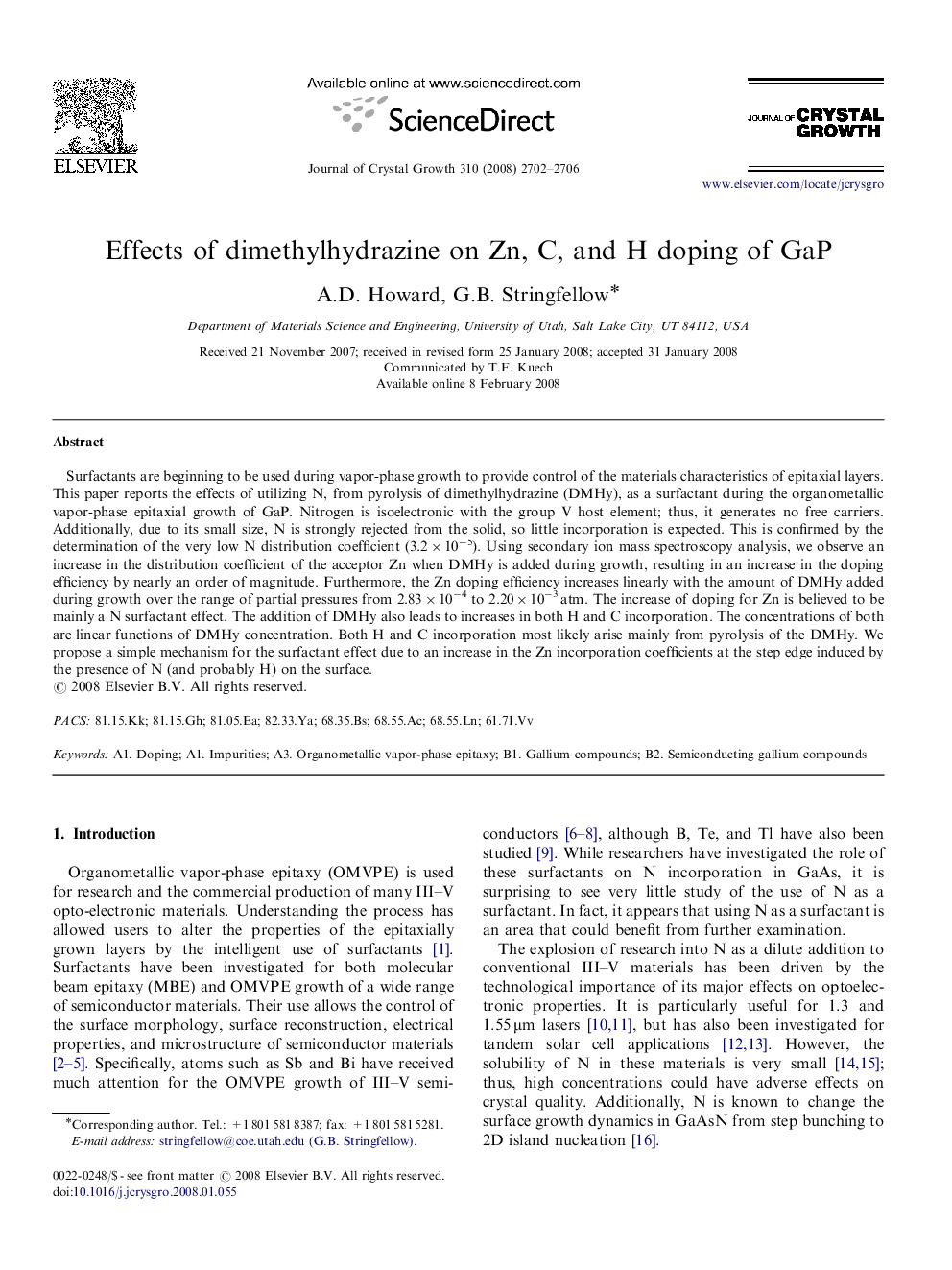| Article ID | Journal | Published Year | Pages | File Type |
|---|---|---|---|---|
| 1795224 | Journal of Crystal Growth | 2008 | 5 Pages |
Abstract
Surfactants are beginning to be used during vapor-phase growth to provide control of the materials characteristics of epitaxial layers. This paper reports the effects of utilizing N, from pyrolysis of dimethylhydrazine (DMHy), as a surfactant during the organometallic vapor-phase epitaxial growth of GaP. Nitrogen is isoelectronic with the group V host element; thus, it generates no free carriers. Additionally, due to its small size, N is strongly rejected from the solid, so little incorporation is expected. This is confirmed by the determination of the very low N distribution coefficient (3.2Ã10â5). Using secondary ion mass spectroscopy analysis, we observe an increase in the distribution coefficient of the acceptor Zn when DMHy is added during growth, resulting in an increase in the doping efficiency by nearly an order of magnitude. Furthermore, the Zn doping efficiency increases linearly with the amount of DMHy added during growth over the range of partial pressures from 2.83Ã10â4 to 2.20Ã10â3Â atm. The increase of doping for Zn is believed to be mainly a N surfactant effect. The addition of DMHy also leads to increases in both H and C incorporation. The concentrations of both are linear functions of DMHy concentration. Both H and C incorporation most likely arise mainly from pyrolysis of the DMHy. We propose a simple mechanism for the surfactant effect due to an increase in the Zn incorporation coefficients at the step edge induced by the presence of N (and probably H) on the surface.
Keywords
Related Topics
Physical Sciences and Engineering
Physics and Astronomy
Condensed Matter Physics
Authors
A.D. Howard, G.B. Stringfellow,
